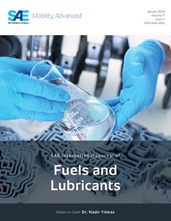Diesel (compression ignition, CI) engines are increasingly exploited in light-duty vehicles, due to their high efficiency and favorable characteristics. Limited work has been performed on CI cold-start emissions at low temperatures. This paper presents a discussion and a brief literature review of diesel cold-start emissions phenomena at low ambient temperatures and the results of tests performed on two European light-duty vehicles with Euro 5 CI engines. The tests were performed on a chassis dynamometer within an advanced climate-controlled test laboratory at BOSMAL Automotive Research and Development Institute, Poland to determine the deterioration in emission of gaseous (HC, CO, NOx, CO2) and solid (PM, PN) pollutants following the EU legislative test procedure (testing at 20°C to 30°C and at -7°C, performed over the NEDC). The tests revealed appreciable increases in emissions of regulated pollutants. Carbon dioxide emissions were some 11% to 15% greater, testifying to an increase in the quantity of injected fuel (12% to 16%). Modal analysis of diluted exhaust gas was also performed and cumulative emissions traces are presented. Using the modal results, the proportion emitted during the first segment of the test cycle (the elementary ECE cycle) was calculated for each pollutant. Results differed between the two test vehicles, by pollutant, and with the test temperature, taking values between 12% (for NOx and CO2) to 89% (for PN). Temperature data acquired during testing is also presented. Despite the excess emissions observed, the test vehicles compared relatively favorably to the results of similar tests conducted on other vehicles.
